To make political thinking more accessible and interactive, London-born artist Yara El-Sherbini uses creative games to involve people and give them space to think about the changing world.
“Audience engagement is at the heart of my work,” says Yara in an interview with Rosa Boshier. “When people become physically engaged, it changes their interaction with the artwork.”
Yara takes playful games and changes them into political art installations. She critiques border issues, political warfare, racist stereotyping and the importance of decolonizing science.
Her installations suggest the urgency of the United Nations Global Partnerships and Peace, Justice and Strong Institutions Sustainable Development Goals. These Goals emphasize the need to create alliances between countries for supporting marginalized communities.
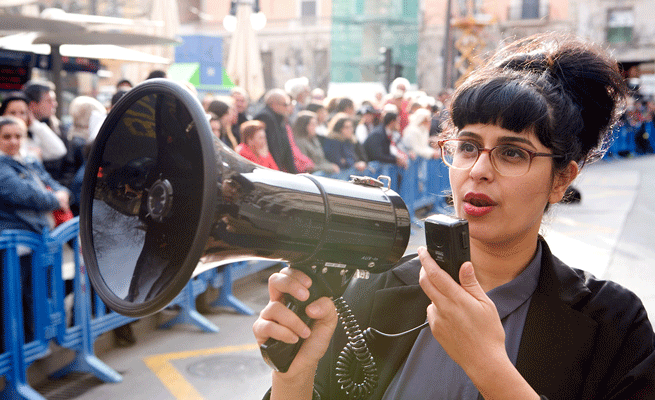
The UN’s Reduced Inequalities Sustainable Development Goal is another major theme in Yara’s work. She critiques how physical borders harm human connections, and hinder collective growth and sustainable approaches to prosperity.
Yara’s installation Operation Brexit (2017) tackles these themes of political crisis and the need to think critically about the people making decisions about the future of countries.
Yara converted the popular children’s game Operation into a political investigation. The board of the game, rather than having a human anatomical figure, marks countries part of the European Union (EU). The player has 10 seconds to extract Britain from Europe with a pair of tweezers.
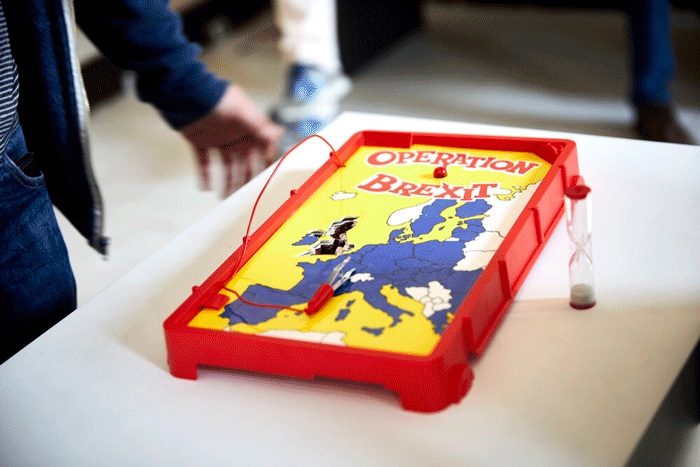
She intends to subtly mock Brexit; its roots in colonialism and rising xenophobia in British citizens. When former British PM David Cameron created a referendum, asking people to vote whether to stay or leave the EU, many people and newspaper outlets, including Politico, called out the insanity of PM Cameron’s decision.
Border Control (2015) similarly tackles border issues on the other side of the Atlantic: the crisis between the US and Mexico.
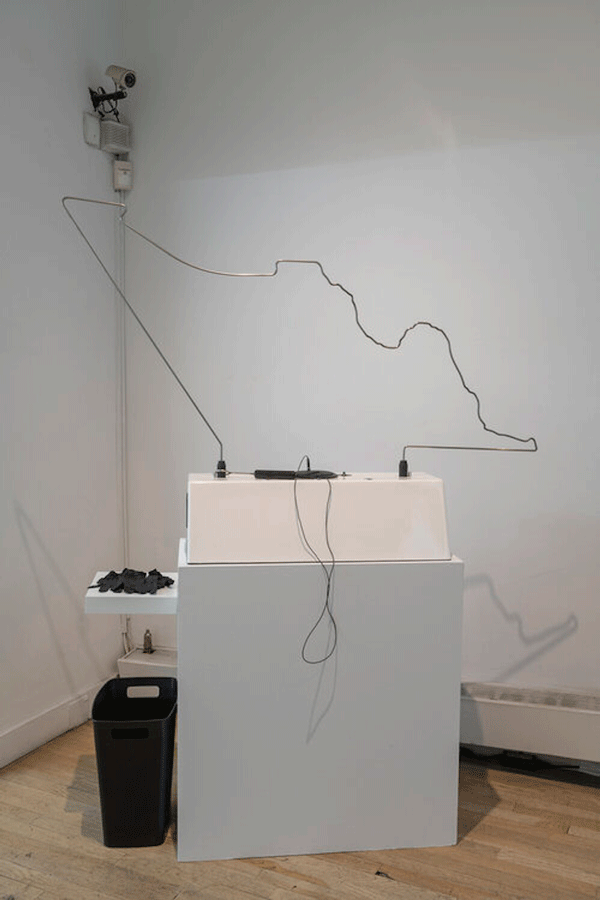
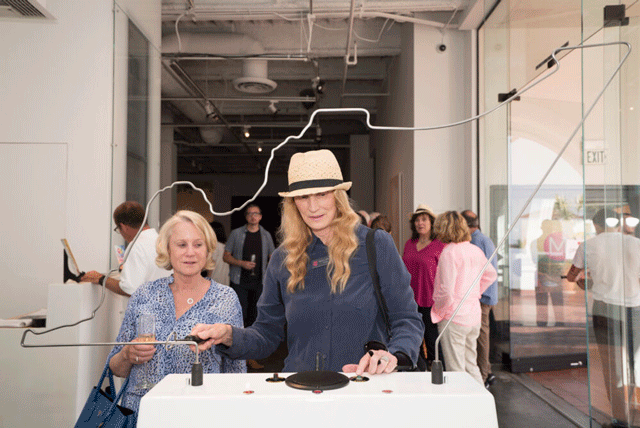
Border Control reimagines the game BuzzWire. Rather than having intricate loops of metal wire, Yara contorted the wire into the US-Mexico border. The players have one minute and three chances to cross the border holding a magnetic handle. If the handle touches the wire, warning sounds and lights are triggered.
While talking about Border Control, Yara says, “It is a relational artwork. [...] It's also an entry point to start to think about the politics of borderlines as power lines. Borderlines are really charged, highly political lines that we need to continuously re-question and reconsider our relationship to.”
Another installation piece, Roadmap For Peace (2018), engaged in borderlines in a similarly engaging way. Road Map For Peace was the name of a, now failed, plan established in the Middle East in 2003 to solve the Israel-Palestine crisis.
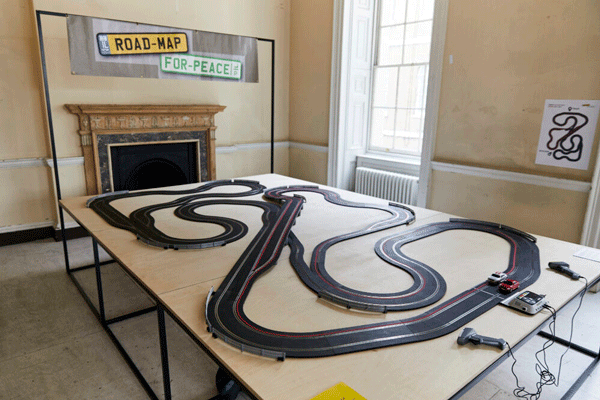
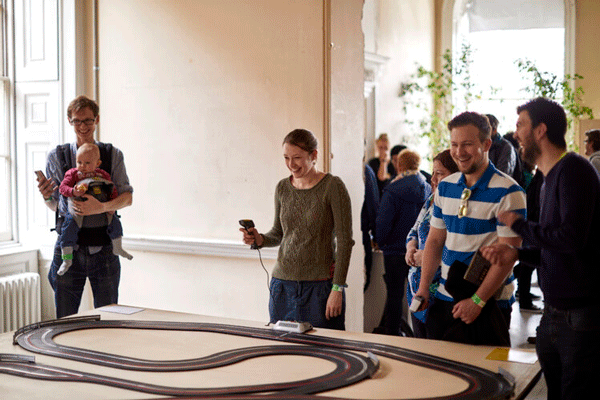
Roadmap For Peace is a “participatory sculpture” consisting of Scalextric tracks and two remote-controlled cars. The players navigate those cars from Psagot to Bethlehem. The route in Yara’s sculpture matches the existing roads in Palestine and Israel where, due to restrictions on movement based on citizenship, the routes separate.
Players are supposed to cross the finish line together, keeping a check on the other car’s speed and distance. This bridges the gap between the two players who are driving on different territories but must think about the other person’s position and experience.
“[W]hat I am passionate about is politics; getting people engaged with knowledge production. When you are looking at a map it is about re-questioning how these borders were decided. [...] What is it that we really know about how the world has been divided?” - Yara El-Sherbini.
Yara’s Other Forms of Regulation and Control (2020) moves away from borderlines and questions data control and collection in our capital-saturated society.
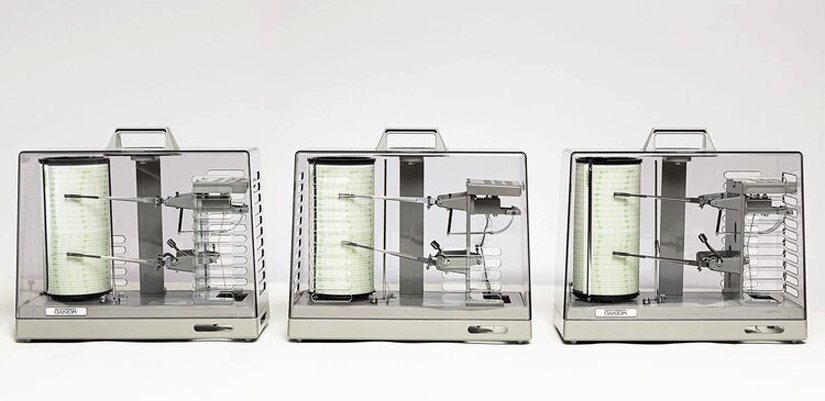
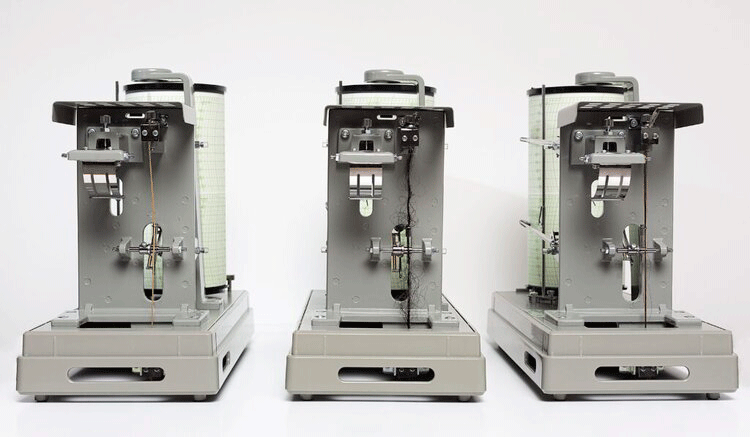
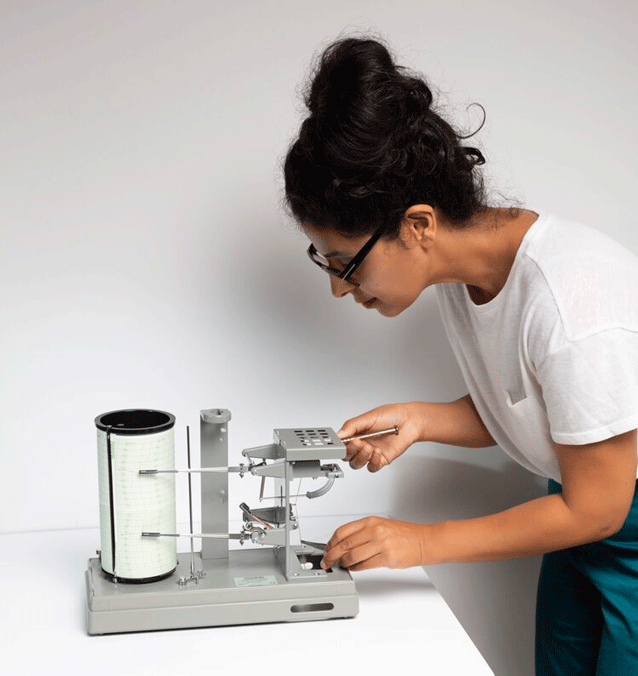
Other Forms of Regulation and Control features three hygrothermographs. Hygrothermographs are small machines, mostly used in galleries and museums, to plot the environment of the space on a graph and control it to protect the artworks. It measures the humidity and temperature by inserting a piece of human hair into the machine. These machines, historically, use “phenotypically Caucasian hair” as the baseline for monitoring the space.
These machines, often out of sight, on the “periphery of the space,” were made into the main artwork by Yara. She used a different type of ethnic hair in each machine: “Asian,” “Caucasian,” and “African.”
Other Forms of Regulation and Control emphasizes two important points:
- Data collection and scientific research use whiteness as the default which explicitly ignores the lives of people of colour.
- Corporations support activist movements only as a gesture without acknowledging their complicity in perpetuating systematic racism which was responsible for their company’s foundation and survival.
“El-Sherbini lays bare the racialization of science, and the way institutional power and authority are used to justify racial hierarchy. It (Other Forms of Regulation and Control) symbolizes many fraught histories at once, an implicit reference to the myriad ways in which race has been used as a form of control, from Jim Crow laws to recent quantitative demographic “insights” on the impact of COVID-19 in communities of colour.” - Dina Ramadan.
Visit Yara El-Sherbini’s website to view more games and interactive installations.
For donating to Palestinians in crisis, check out Palestine Child Relief Fund and Medical Aid for Palestinians.
For donations helping children suffering horrific conditions at the US-Mexico border, check out ActBlue’s work.
